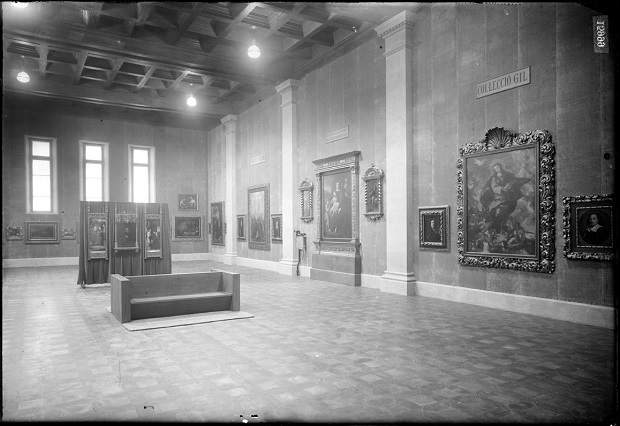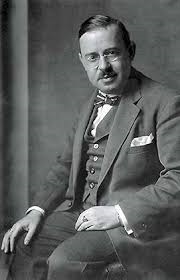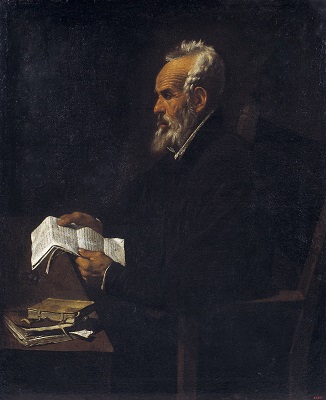Joan Yeguas

August Liebmann Mayer (Griesheim, 1885 – Auschwitz, 1944) was one of the great experts on Spanish painting of his day; his opinion was heeded in academic circles, the world of museums and the field of art dealing. He graduated in Berlin in 1907 under the wing of Heinrich Wölfflin and with the support of Hispanic studies scholar Carl Justi, with a thesis on Jusepe de Ribera, «lo Spagnoletto» . He eventually became a conservator at the Alte Pinakothek in Munich and also a professor at the University of Munich, but his professional career in Germany was affected by the rise of National Socialism. Mayer was Jewish and he was accused of profiting from his expert opinions about works of art of dubious authenticity, so much so that he had to resign his posts at the museum and the university. Between March and July 1933 he was placed under arrest and tortured, and he was only freed after he had been given a huge fine (his house was seized and he had to auction off some personal belongings). After that he went into exile in different countries, but he finally settled in Nice, in France. With the invasion of France in 1940, the Nazis were once more a threat and he was captured in February 1944. He was taken to the internment camp at Drancy (near Paris), from where he was deported to the extermination camp at Auschwitz, where he died on 12 March 1944 in the gas chamber.

As an expert on Hispanic art, Mayer often visited museums and private art collections in Spain. He was also very familiar with some works conserved in Catalonia. In his thesis on Ribera (Jusepe de Ribera Lo Spagnoletto, Leipzig, 1908, revised in 1923) he studied the Martyrdom of Saint Bartholomew, a work that he considered to be «by a school/ an imitation» . This led later scholars to overlook this painting, and there was a significant silence until it was reappraised in the 1970s. Mayer was also very familiar with the Baroque painting in the Museu Nacional, something reflected in his publications: in Geschichten der Spanischen Malerei (1913) and, later, in the Spanish version Historia de la pintura española (1928), where he mentions Epiphany by Francisco Herrera the Elder, which he attributes to Antonio del Castillo; Immaculate Conception by Francisco de Zurbarán; Imposition of the Chasuble on Saint Ildephonsus by Juan de Valdés Leal; or Still Life with Apples, Grapes, Melons, Bread, Jug and Bottle by Luis Egidio Meléndez.
- Jusepe de Ribera, Martyrdom of Saint Bartholomew, 1644, Museu Nacional d’Art de Catalunya.
- Francisco Herrera (el Vell), Epiphany, 1653, Museu Nacional d’Art de Catalunya.
- Francisco de Zurbarán, Immaculate Conception, 1648-1649, Museu Nacional d’Art de Catalunya.
- Juan Valdés Leal, Imposition of the Chasuble on Saint Ildephonsus, c. 1661, Museu Nacional d’Art de Catalunya.
- Luis Egidio Meléndez, Still Life with Apples, Grapes, Melons, Bread, Jug and Bottle, c. 1771, Museu Nacional d’Art de Catalunya.
From December 1919 to October 1920 Mayer was in Barcelona to examine the paintings in the collection of Leopold Gil i Llopart, deposited in our museum in 1922, a selection of which was purchased in 1944. He made a report on these works, signed on 12 October 1920, in which he makes a list of attributions and a financial valuation (published by Jordi de Nadal in the journal Goya, no. 345, 2013). He analyses the paintings, maintains or revises their pre-existing authorships, and, in some cases, presents them in publications. These include «Algunos cuadros desconocidos de escuela madrileña» (Some unknown paintings by the Madrid school), Boletín de la Sociedad Española de Excursiones (1922), in which he references Ascension by Francisco Camilo and Annunciation by Francisco de Solís. Also of interest is his opinion of Portrait of Charles II, then attributed to Juan Carreño de Miranda, and which since the 1990s has been ascribed to Claudio Coello:
«I find the attribution to Carreño most justified. The painting of the clothes is masterful and in some ways it reminds one of Claudio Coello’s cruder technique.»
- Francisco Camilo, Ascension, 1651, Museu Nacional d’Art de Catalunya.
- Francisco de Solís, Annunciation, 1664, Museu Nacional d’Art de Catalunya.
- Claudio Coello, Portrait of Charles II, 1680-1683, Museu Nacional d’Art de Catalunya.
Apart from that, he was fascinated by two works: Velázquez’s Saint Paul and Tintoretto’s Portrait of a Gentleman. The Velázquez had been attributed to the master from Seville for the first time in 1916, by Hèctor Oriol (Víctor Oliva’s pseudonym), and Mayer confirms it and makes it known internationally in the article «Einige unbekannte Arbeiten des Velázquez» , Zeitschrift für bildende Kunst (1921), and later in the monograph Velázquez: a catalogue raisonné of the pictures and drawings (1936). What he says in the 1920 report still holds true today:
«I am in no doubt that this canvas is an authentic work by the hand of Velázquez. It is from his early period and of great interest for the development of the art of this great master.»
About the Tintoretto, he says:
«Attributed to Titian, this most beautiful portrait is the characteristic work of Jacopo Robusti, known as Tintoretto. I have published this painting in Zeitschrift für bildende Kunst (1920); it is one of the finest portraits painted by that famous Venetian painter.»
Specifically in the article «Zwei unbekannte Werke Jacopo Tintorettos». On the other hand, it was believed that the attribution came from Adolfo Venturi (1929).
- Diego Velázquez, Saint Paul, c. 1619, Museu Nacional d’Art de Catalunya.
- Tintoretto, Portrait of a Gentleman, 1553-1554 , Museu Nacional d’Art de Catalunya.
Finally, it is also worth mentioning the reference to Ramon Llull, whose attribution is complex (first Velázquez, then the Ribaltas, and recently Luis Tristán). In the 1920 report he remarked: «a work by Ribera’s school, it depicts a philosophical figure», an idea that he published in “Bemerkungen zum Werk des Velázquez”, Münchner Jahrbuch der Bildenden Kunst (1927), despite the fact that in the Velázquez catalogue (1936) he changed his mind and attributed it to the master from Seville.

In the 1927 article, he mentioned a philosopher with the inscription «Atlante» that was in a private collection in Madrid, and which since 1948 has been in the Museu Nacional (deposited by the Servicio de Defensa del Patrimonio Artístico Nacional). For Mayer, this canvas was a copy of a Velázquez, but the work referred to is actually Thales or Anaxagoras that Ribera painted in about 1640. We know of different versions of this philosopher, but only one autograph, conserved in a private collection in the United States.
- Anonymous, Copy of «Philosoph», 1640-1700, Museu Nacional d’Art de Catalunya.
- Josep Ribera, Tales or Anaxàgores, c. 1640, private collection.
Among other aspects, Mayer incorporated two of the paintings in the Museu Nacional into El Greco’s catalogue, in the book Domenico Theotocopuli El Greco (1926). With regard to the Portrait of Fray Alonso de Santo Tomás, attributed to Juan Bautista Maíno, the German scholar says that it is by Francisco de Zurbarán, and he reflects this in the article «Unbekannte Werke Zurbarans» , Zeitschrift für bildende Kunst (1927-1928). In January 1929, there is a record of his visit to the Museum in Montserrat Abbey to study a work by the Master of the Annunciation to the Shepherds, a 17th-century painter in the style of Caravaggio.
- Juan Bautista Maíno, Portrait of Fray Alonso de Santo Tomás , 1648-1649, Museu Nacional d’Art de Catalunya.
- Mestre de l’Anunci als Pastors, Martiri de Sant Plàcid i companys, 1625-1635, Museu de Montserrat.
Finally, in December 1936 the journal Butlletí dels Museus d’Art de Barcelona mentioned Mayer’s time at the Museu Nacional, with the text «Observacions de Mayer sobre pintures exposades al Museu d’Art de Catalunya» , in which some of his opinions after his visit are transcribed. One of the most curious refers to the Version of the «Portrait of Archbishop Fernando de Valdés» by Diego Velázquez, a version or copy of Velázquez’s Portrait of Archbishop Fernando Valdés, in the National Gallery in London, which reminded the expert of the style of Alonso Cano.
- Anonymous, Version of the «Portrait of Archbishop Fernando de Valdés» by Diego Velázquez, 1634-1639, Museu Nacional d’Art de Catalunya.
- Diego Velázquez, Portrait of Archobishop Fernando de Valdés, 1640-1650, The National Gallery.
Related Posts
Opening of the new Renaissance and Baroque galleries!
Rethinking the Collection: new attributions in the Renaissance and Baroque
The Palau Nacional, a building steeped in history / 1
The Palau Nacional, a building with a long history /2
Art del Renaixement i Barroc























